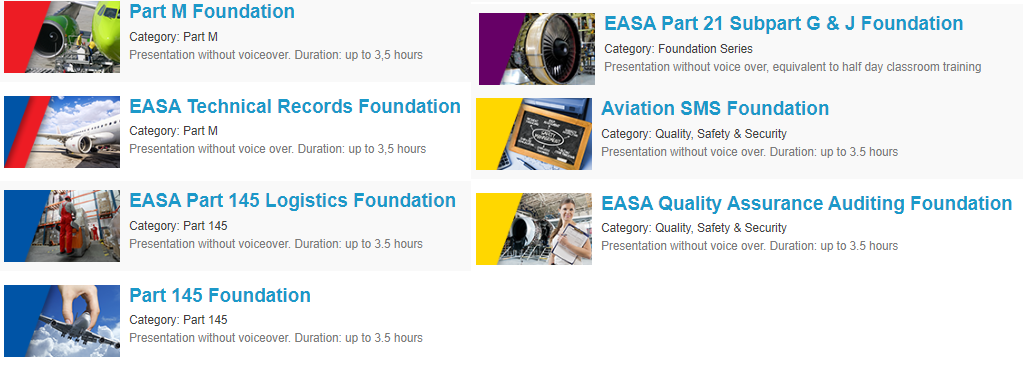The purpose of this document is to consider the role of regulatory and vocational training related to the ongoing development of competence within an EASA Part 21 / CAR 21 Environment.
A Production Organisation is quite similar in fact to a Part 145 Maintenance Organisation in that similar processes are evident with the difference being we are “Making” not “Mending.” However most other elements are clearly visible – Tooling, Equipment, Manpower, Facilities, Parts, Documentation, Training, Quality & Safety.
Competence Learning Path
Essentially there are two elements to consider related to the individuals learning path – the first is related to an understanding of the regulatory background which supports the objective.
The second is a deep understanding of the Organisation Process and Procedures related to the objective.
For the maximum value, the learning process should be supported by a tutor or mentor who has a comprehensive understanding of both the organisational and regulatory obligations.
What is Part 21 / CAR 21 Subpart G? (Production Organisation Approval – POA)
Essentially it is an approval which permits an organisation to manufacture aircraft parts and appliances in accordance with Approved Design Data which is owned and supplied by an associated design organisation.
Note it is not possible to function as a Production Organisation (POA) without a close relationship with the association Design Organisation (DOA)
How do I Become Proficient in my Personal Understanding of Part 21 / CAR 21 Subpart G?
Well, the first thing to recognise when considering matters related to competence is to understand where you are on your individual learning path.
So to start with a Gap Analysis and to understand that you will need to be supported to achieve this.
Caution – To put a person without any prior aviation regulatory or process knowledge directly onto a Hi-Level Regulatory Training Course is akin to throwing a “Non-Swimmer” in the Deep Water!
Subpart G is a Very Complex Approval (more so than in fact than EASA / CAR 145)
Consider the various areas of engagement with which you may have to be familiar to effectively deliver your role within EASA Part 21 Subpart G / CAR 21 Subpart G. annex’s, plus Part 21 Sub Part J as well as Part 145, finally the importance of the Role of the” Production Organisation” Cannot be overstated!.
• An understanding of the “Framing” of the regulation is essential for a comprehensive understanding of the integration of the production organisation – Subpart G in isolation means nothing, however when it is framed against a backdrop of 19 ICAO annexe’s as well as an EASA Regulatory environment with Certification Specifications which are then harmonised with the FAA. Together with a GCAA regulatory system which mirrors EASA in a significant way, it starts to make more sense.
• It is essential that any implementation of Part 21 Sub-Part G must be taken into context of the EASA/GCAA Regulatory environment.
• The Subpart G organisation receives approved design data from the Part 21 Subpart J Design Organisation Approved Organisation – (Design Organisation Approval DOA) this is an important documented relationship which must be fully understood including the various obligations on each party.
• The Subpart G requires a high-level reporting system to ensure appropriate liaison in the even of issues/problems which can lead to the need for service bulletins to be generated.
• A detailed understanding of the process of Subcontracting and supplier approval system
• The Stores Inspection System within a POA contains expanded activities when compared to a 145 with the need for conformity inspection as well as First Article Inspections.
• Close Co-operation is required between the POA Quality System and the DOA Design Assurance System and a comprehensive contract is required – a deep understanding of EASA Quality Assurance & Quality Control Principles is essential.
• The Subpart G organisation may extend the approval to include Subpart F which will permit the development of product or parts against “draft” documentation
• The need for the Production Organisation to employ Safety Management System principles cannot be understated – not only is it important for the organisation to share the need of the SMS – The full engagement of employees is essential and should be evidenced by the top-down support of senior management and the level of reporting within the system.
• The need to understand the obligations related to Managing Technical Records in Part 21 / CAR 21 Environment.
• Terms which need to be fully understood to the point where the employee can adequately explain the purpose of:
o Parts Manufacturing Approval (PMA) & European Part Approval (EPA)
o Supplemental Type Certificates (STCs) and Major Modifications
o Minor Modifications & Repair data.
o Technical Standard Order / European Technical Standard Order
How do I Develop a Comprehensive Understanding so I can fully engage with the Part 21 Subpart G System?
Step 1 is a Personal Gap Analysis
If you have no previous experience in a Part 21 Production Environment you are clearly going to be in a different place from a person with 10 years’ experience who is “taking” the course as a recurrent refreshment. So it is important to have a clear picture of your current objective/understanding together with the endpoint related to your “Role”
Step 2 – Working with your mentor/competence manager develop your training plan
Your initial focus should be to develop a full understanding of what the company is doing by becoming familiar with the organisations process, procedures and practices
To do this within a structured mentoring program is highly beneficial
Once you are familiar with this information you will be able to start to develop a shared understanding of your gaps with your mentor/competence manager.
Step 3 – Raising Initial Awareness
SofemaOnline www.sofemaonline.com offers foundation level training
See the following courses all of which will provide a basic awareness and help to prepare you for your journey ahead.
A package of such “basic” courses will help to build a solid understanding of the various regulatory elements and obligations which come together to create an integrated awareness.
Work through the online training courses under the guidance of your mentor and together with an increasing awareness of Company Process and Procedures – achieve a basic level of understanding.
Step 4 Ready Now for an interactive Classroom Training
With Steps 1 to 3 under your belt, you will be fully able to effectively engage with an Instructor-Led Classroom Training.
Work with your mentor until you are ready to attend a classroom-based regulatory training course
Step 5 your journey has only started
(mine started in 1971 )
Good luck and happy aviating!
Steve Bentley
MD SAS
office@sassofia.com






